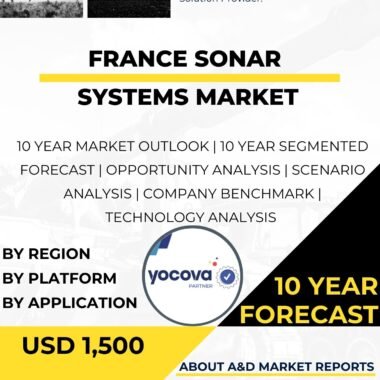Description
Canada, as a maritime nation with extensive coastlines and vast ocean territories, places great importance on the development and implementation of advanced sonar systems. Sonar, short for Sound Navigation and Ranging, is a critical technology used in various maritime applications, including submarine detection, mine countermeasures, underwater surveillance, and ocean research. The Canadian government and defense industries have invested significantly in the research, development, and acquisition of sonar systems to enhance naval capabilities and protect national interests.
One of the primary applications of sonar in Canada is submarine detection. Given the strategic importance of Canada’s maritime approaches and the potential threats posed by submarines from hostile nations, the Royal Canadian Navy (RCN) has deployed various sonar systems on its surface vessels. These systems employ active and passive sonar technologies to detect and track submarines underwater.
Active sonar systems emit sound waves, commonly referred to as “pings,” into the water and analyze the echoes reflected back from underwater objects. These systems, also known as active sonobuoys, can be deployed from aircraft or surface vessels to scan large areas and locate submarines. The RCN’s maritime patrol aircraft, such as the CP-140 Aurora, are equipped with sophisticated active sonar systems, enabling them to perform long-range anti-submarine warfare operations.
Passive sonar systems, on the other hand, listen for sounds generated by submarines or other underwater objects without emitting any signals themselves. Submarines are relatively quiet when submerged, but they still produce noise due to various factors like machinery, propellers, and hydrodynamic interactions. Passive sonar arrays, installed on naval vessels and submarines, can detect and analyze these acoustic signatures to identify potential threats.
The Canadian Navy also uses sonar technology for mine countermeasures operations. Naval mines pose a significant threat to maritime traffic and military vessels, especially in coastal and littoral regions. To counter this threat, the RCN employs mine-hunting sonar systems that can detect and classify mines submerged on the seabed. These sonars use advanced signal processing algorithms to discriminate between mine-like objects and natural seabed clutter.
Moreover, to enhance underwater surveillance and protect vital maritime assets, Canada utilizes long-range passive sonar systems on fixed underwater arrays. These arrays, strategically positioned in key maritime regions, enable continuous monitoring of underwater activities, including submarine movements and other vessel traffic.
In addition to military applications, Canada employs sonar technology for ocean research and environmental monitoring. The Canadian scientific community utilizes specialized research vessels equipped with multi-beam and side-scan sonars to map the seabed, study marine ecosystems, and explore underwater geological features. These sonar systems facilitate the discovery and mapping of previously unknown seafloor habitats and help advance scientific understanding of the marine environment.
Furthermore, in the context of environmental monitoring and marine mammal protection, Canada employs acoustic sensors to detect and mitigate potential threats to marine life. Passive acoustic monitoring systems can identify the acoustic signatures of marine mammals, helping researchers and authorities to establish protective measures and reduce the impact of human activities on these vulnerable populations.
Canada’s expertise in sonar technology extends beyond domestic use, as the country actively participates in international collaborations and research initiatives. The Canadian defense industry is a significant player in the global sonar market, providing advanced sonar solutions to allied nations and contributing to multinational projects focused on improving underwater surveillance and security.
As with any technology, the evolution of sonar systems is ongoing. Canada continues to invest in research and development to enhance sonar capabilities further. The integration of artificial intelligence and machine learning algorithms into sonar systems holds promise in improving target detection, classification, and tracking capabilities, while also reducing false alarms and increasing operational efficiency.
In conclusion, Canada’s sonar systems play a crucial role in enhancing maritime security, naval operations, ocean research, and environmental monitoring. With a focus on both military and civilian applications, Canada remains at the forefront of sonar technology development, contributing to global efforts to secure and explore the world’s oceans.




